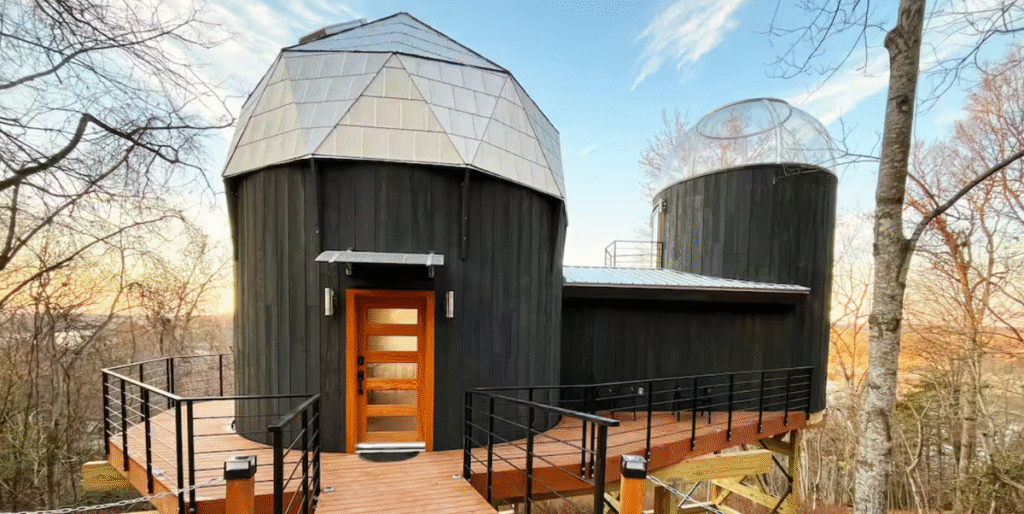
When I travel, my itinerary isn’t full of landmarks and tourist attractions — it’s focused on restaurants, cafés and bakeries. For me, tasting new things is by far the best part of the journey, and some of my favourite memories are of the delicious things I’ve eaten along the way. (The biggest challenge is working up an appetite between meals, but that’s where those monuments come in handy.)
Road trips are perfect for foodies: you cover a lot of ground; you can make your own schedule (and squeeze in last-minute reservations); and because you’re in the driver’s seat, you can pull over for any and all roadside delights (hello, farm-fresh fruit stands!).
To pull all of that off, however, you have to do the legwork. And throughout my travels, I’ve honed my method for trying all the best food I can. So to help you pinpoint the tastiest stops on your road trips this summer, I’m sharing how I do it.
Research, then cross-reference
Once I know where I’m travelling to, I take a three-pronged approach to researching food. I promise, it’s not as intense as it sounds, and you can do it in as little as half an hour.
First, I’ll do a preliminary search online for reputable articles and restaurant lists for the area (try CBC, Frommer’s, Maclean’s, Condé Nast Traveler and Eater). This is a good starting-off point and will help give you a general idea of the place you’re visiting and what it’s famous for.
Then I’ll search TikTok and Instagram, using prompts like “best Halifax restaurants,” “best food in Halifax” and “Halifax food.” You could narrow it down if there’s something specific you’re looking for — “best lobster in P.E.I.” or “best Jewish deli in Montreal,” for example.
Lastly, I’ll do a personal call-out asking for recommendations. This can be as simple as a text to a friend or a post on social media. Nothing beats an endorsement from someone you trust.
Once I’ve gathered my intel, I look for the common threads between them — the sweet spot where multiple people and sources with no connections to each other are mentioning the same restaurant or menu item. This is where the food magic happens! And you may be surprised at how often this occurs once you start looking. (This was how I discovered the most glorious deep-fried chicken wings at Phnom Penh while travelling through Vancouver, and I still dream of them often.)
Find the right balance for ratings
This isn’t an exact science, but by analyzing some simple numbers from a restaurant’s Google reviews, you can get a better idea of what you’re getting into. Yelp and Tripadvisor can be great resources too, but I like Google for the sheer volume of entries.
Generally, I’ll skip anywhere that has fewer than 4.1 stars. That’s not to say the food won’t be good if it has a lower rating, but I like to hedge my bets when travelling, and this is the easiest way to avoid disappointment.
Next, I consider how many ratings the restaurant has:
-
10,000 or more ratings = tourist trap. Sometimes these places have tasty food or a good vibe, but proceed with caution.
-
5,000-10,000 ratings = tourist staple. Chances are the restaurant is extremely popular and well-established, but it might not be the most unique. If you’re looking for something tried-and-true, which will probably satisfy, you’ll find it here.
-
1,000-5000 ratings = local favourite. Here, you’re more likely to find less touristy options with thoughtfully curated food or experiences. This is a good benchmark to aim for.
-
1,000 or fewer ratings = hidden gem potential. New and up-and-coming spots will have a limited number of ratings, so actually read the reviews to get a better sense of the place. I’ve discovered some of my favourite spots this way.
Note: I apply this system to large cities and tourist hubs, but if the place you’re travelling through is small or lesser known, scale down accordingly.
Embrace the unexpected
No matter how much research you do for your road trip, you can’t plan for the happy accidents along the way. So make sure to leave space for them.
If you’re unexpectedly cruising through a charming town, pull over on its main street for a pit stop. You can stretch your legs and you might just find a hidden gem while you stroll.
If you’re travelling through a rural area, look out for homemade signs advertising fresh fruit or baked goods. These are the kinds of treats that may not be pinned on map apps, and that makes them all the more special.
One of my fondest memories of driving through Ontario’s Prince Edward County is of spotting a sign for butter tarts outside a roadside shed and discovering the most mouth-watering butter tarts, packaged in beautiful pink boxes. It felt like a dream! Since then, Waupoos Tarts has garnered acclaim online, but I still get a thrill knowing I discovered them on my own.
Take the pressure off and never eat hangry
I’m guilty of insisting that every single thing I eat while travelling needs to be the best, but I’ve learned the hard way that you have to cut your losses before the hangry sets in.
Packing light snacks can take the edge off when you miss a turn or realize you’re further from your destination than you thought. There’s no sense in sucking the joy out of your vacation just so you can eat that one perfect thing later. (Plus being in a bad mood makes everything taste worse.)
Shelf-stable food like granola bars and trail mix are a great backup and easy to pack, but my move is to stock up on road trip snacks I wouldn’t normally buy. I find beef jerky and nostalgic candy from my childhood makes it more fun and less like a consolation prize.
Even better, while you’re on the road, pick up goodies that you can’t get at home, like a bag of chips in a specialty flavour or local fruit that’s in season. If you don’t end up eating them, they can be a fun souvenir or treat for later.
I’ll never forget driving through the Rockies for the first time and digging into the maple salmon jerky I picked up from an Indigenous store. (I know it tasted better on those snowy winding roads than it ever would have on my couch at home!)
And remember if you do eat a disappointing meal, don’t sweat it. There’s always the next roadside stop, town or trip to discover something mind-blowingly delicious, and the mix of experiences is part of the fun of an adventure like this.


